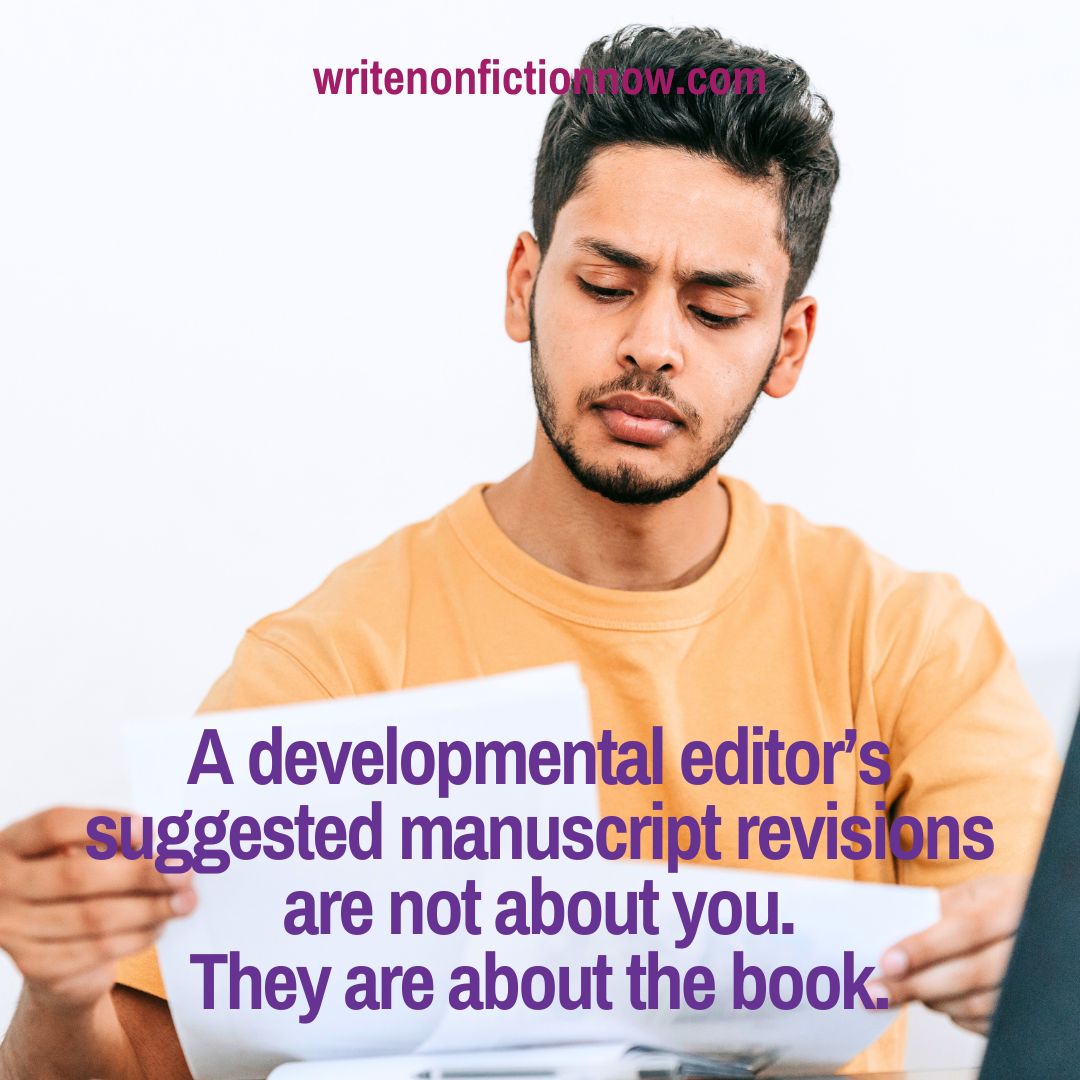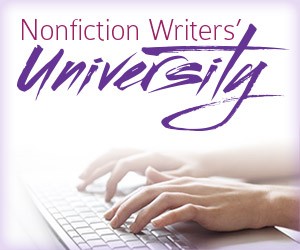Saturday, July 5, 2025

If you have written a nonfiction book, your next step is to get the manuscript edited. You need several types of editors, but a developmental editor is the first one to offer feedback and revision notes. Once you get those notes, what’s the best approach to your revisions?
I have just received the revision requests back from the publisher of my forthcoming book on writing for change. I’ve gone through this process four times in my career as a traditionally published author. However, until now, I hadn’t considered how to handle revision requests effectively—and with as little emotional upset as possible.
How You Plan to Publish Impacts Your Edits
The approach you take to your developmental edit revisions depends on how you plan to publish your book.
If you have hired an editor and plan to self-publish your book, you can choose to ignore the suggested edits if you like. They are, after all, just suggestions.
Would it be beneficial for you to take these suggestions seriously and implement most of them? Yes. After all, the editor made them as a way to improve your manuscript and make the book more salable. And you paid for that feedback.
If you are traditionally publishing your book, the developmental editor is likely part of the publishing company’s team. You don’t hire but are assigned an editor.
The publisher expects you to address all revision notes; they are not suggestions, but actual requests that you act upon. However, you may disagree strongly with a few revision requests. In that case, you can let your editor, literary agent, or contact person at the publisher know and discuss your options.
3 Perspectives on Nonfiction Developmental Edit Revisions
Now, let’s discuss the best approach to nonfiction book developmental edit revisions. I approach this topic from three perspectives:
- Overcoming your mental and emotional response to the revision requests.
- Addressing and completing the requested revisions.
- Your interpretation of the requested revisions.
Why do I look at the revision process from these three perspectives? Because I needed to address all three—mental and emotional response, completion of revisions, and my mindset—to effectively go through the revision process. I assume I’m no different from most writers; that means, you will likely need to address these three perspectives to effectively…and successfully…complete the process as well.
Overcoming Your Mental and Emotional Response to Revision Requests
An email notifying you that the developmental editor has finished their read-through of your manuscript and it’s time for you to make revisions tends to send most writers into a mental and emotional downward spiral. In Yiddish, this would be called mishigas, or craziness.
You become scared, overwhelmed, and uncertain about your ability to fulfill the requests. Not only that, you feel afraid of opening the document to see what revisions have been requested.
Fear is the biggest issue at this stage. You worry that the developmental editor has determined that your manuscript is a mess and needs a ton of changes to make it publishable. You might even suffer from Imposter Syndrome, feeling not good enough to make the requested changes and wondering why you even attempted to write and publish a book.
You may also feel overwhelmed. After all, you must complete the revisions by the given deadline. (Typically, you have about three weeks to revise the manuscript.) Your mind will tell you there is no way you can get it all done in that amount of time.
Before you can begin revisions, you must address your mishigas. You can work with a coach or therapist, or confide in an objective friend and ask for help changing your perspective. Journaling can help as well.
Ultimately, you want to become aware that most of what you are feeling and thinking is overblown. Affirm that you are a good enough writer to have landed a traditional book deal or completed a manuscript. Choose to see yourself as capable of revising the manuscript as per the editor’s suggestion or request within the time given.
How to Address and Complete the Developmental Edit Revision
With a new attitude, it’s time to address the necessary revisions. Start by evaluating what needs to be done. Drop your assumptions and fears, and review the document and all the developmental editor’s notes. You will likely discover that there are fewer changes than you imagined or that the revisions are minor and won’t take long at all.
Your review enables you to assess precisely what you need to do to complete the revision. You might want to take notes, use the “flag” technique, create a to-do list, or determine how many chapters or pages you need to complete daily to meet the publisher’s deadline. (If you are self-publishing, give yourself a deadline of no more than four weeks.)
I like to start the revision on page one, even if no changes are requested. I read the manuscript from start to finish. I might skim some parts, but I basically reread the entire document, making my own or requested changes as necessary.
Some writers prefer to tackle the most challenging tasks first. Others begin with the easiest tasks first. In both cases, this helps build some confidence in your ability to get the job done.
As you revise, make a list of questions you have for the developmental editor. You can email them at several junctures, like when you are a third, half, or three-quarters of the way through the manuscript. Address those requests when you have received answers and understand what you are being asked to do.
Also, don’t be afraid to tell the editor you disagree with a requested change. Ask for clarification, and then, if you are self-publishing, decide if you want to make the suggested change. If you are traditionally publishing, you are still free to voice your disagreement; you may or may not be told to ignore the ones you don’t want to make.
Your interpretation of the requested revisions.
Always remember that a developmental editor’s suggested changes are not about you! They are about the manuscript.
Writers too often see requested revisions as a reflection on themselves. They decide the editor’s remarks mean they aren’t good writers. Don’t take the requested changes personally!
Remember, the editorial process revolves around refining your manuscript to ensure you publish a well-written and well-conceived book. Editing and revising increase the likelihood that your book sells.
Keep that in mind as you tackle the revisions for your nonfiction book’s developmental edit. You want to turn out the best product—book—possible. Approach the revisions with that mindset, and you’ll be eager to make necessary changes to your manuscript.
How do you approach nonfiction book developmental edit revisions? Tell me why in a comment below. And, please share this post with a writer who might benefit from reading it.

Would you like to write and publish nonfiction work, like articles, blog posts, books, or reports…and become a successful (and productive) author? Join the Nonfiction Writers’ University. Get the basic education you need and author and personal growth coaching to help you succeed as a nonfiction writer.
Enjoy a 30-day trial membership for only $1. If you’ve felt the desire to get coached and be supported as you pursue authorship, this program is for you. Participate in monthly group Author Coaching sessions and gain access to an extensive archive of writing and publishing resources.
Photo courtesy of tinapob.
Nina Amir, the bestselling author of How to Blog a Book and The Author Training Manual, is a speaker, a blogger, and an author, book, blog-to-book, and high-performance coach. Known as the Inspiration to Creation Coach, she helps creative people combine their passion and purpose so they move from idea to inspired action and positively and meaningfully impact the world as writers, bloggers, authorpreneurs, and blogpreneurs. Some of Nina’s clients have sold 300,000+ copies of their books, landed deals with major publishing houses and created thriving businesses around their books. She is the founder of National Nonfiction Writing Month, National Book Blogging Month, and the Nonfiction Writers’ University. As a hybrid author she has published 19 books and had as many as four books on the Amazon Top 100 list at the same time. Her most recent book is called Creative Visualization for Writers, and tomorrow her 19th book will be released, The Write Nonfiction NOW! Guide to Creativity and Flow. Find all her books at booksbyninaamir.com or find out more about her at ninaamir.com.